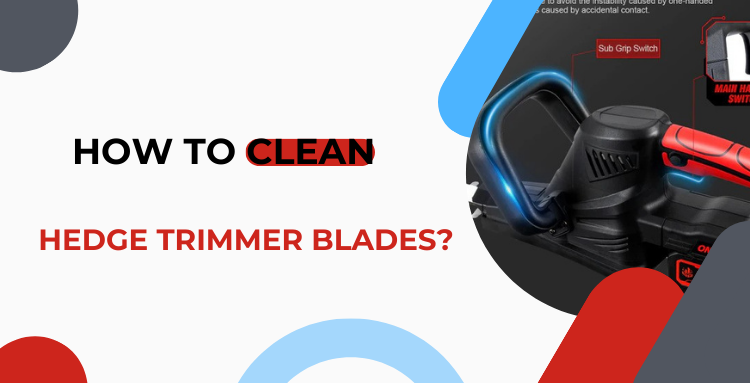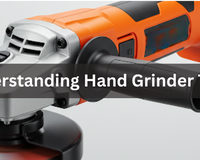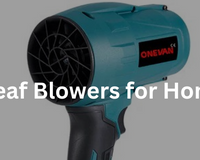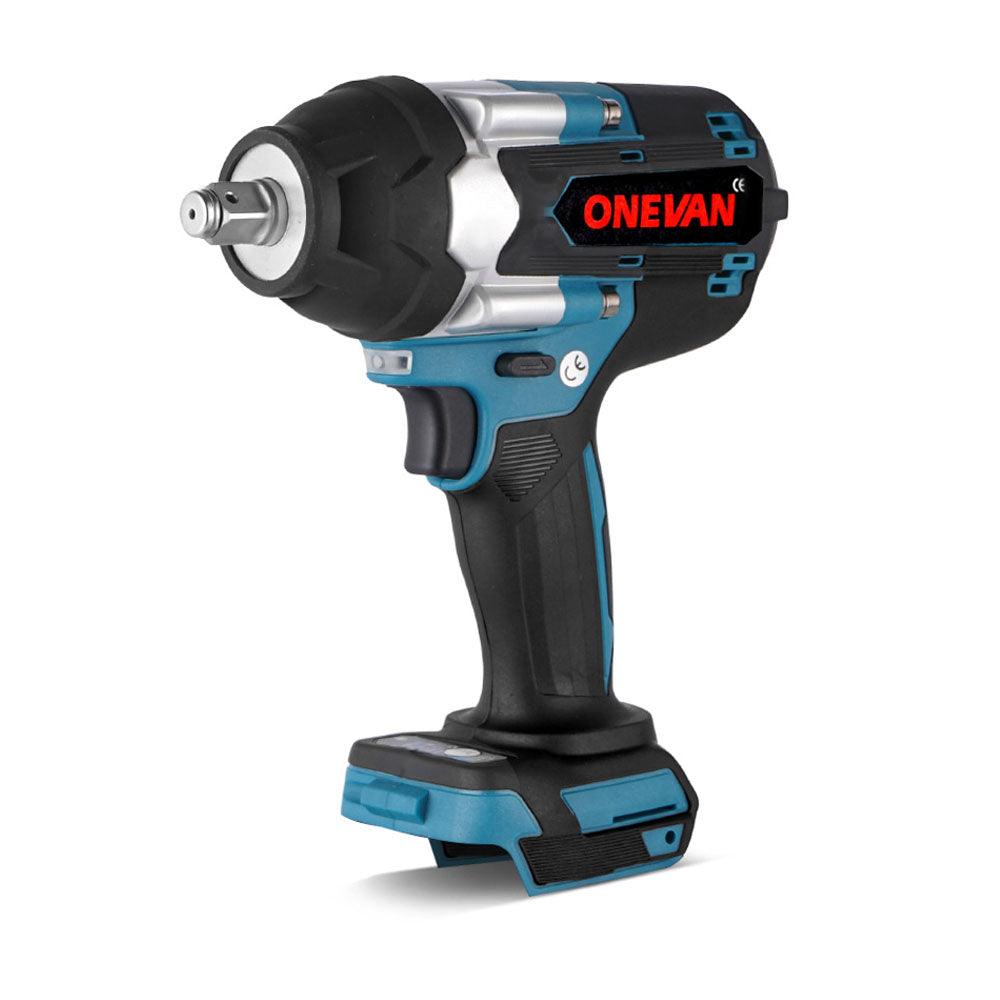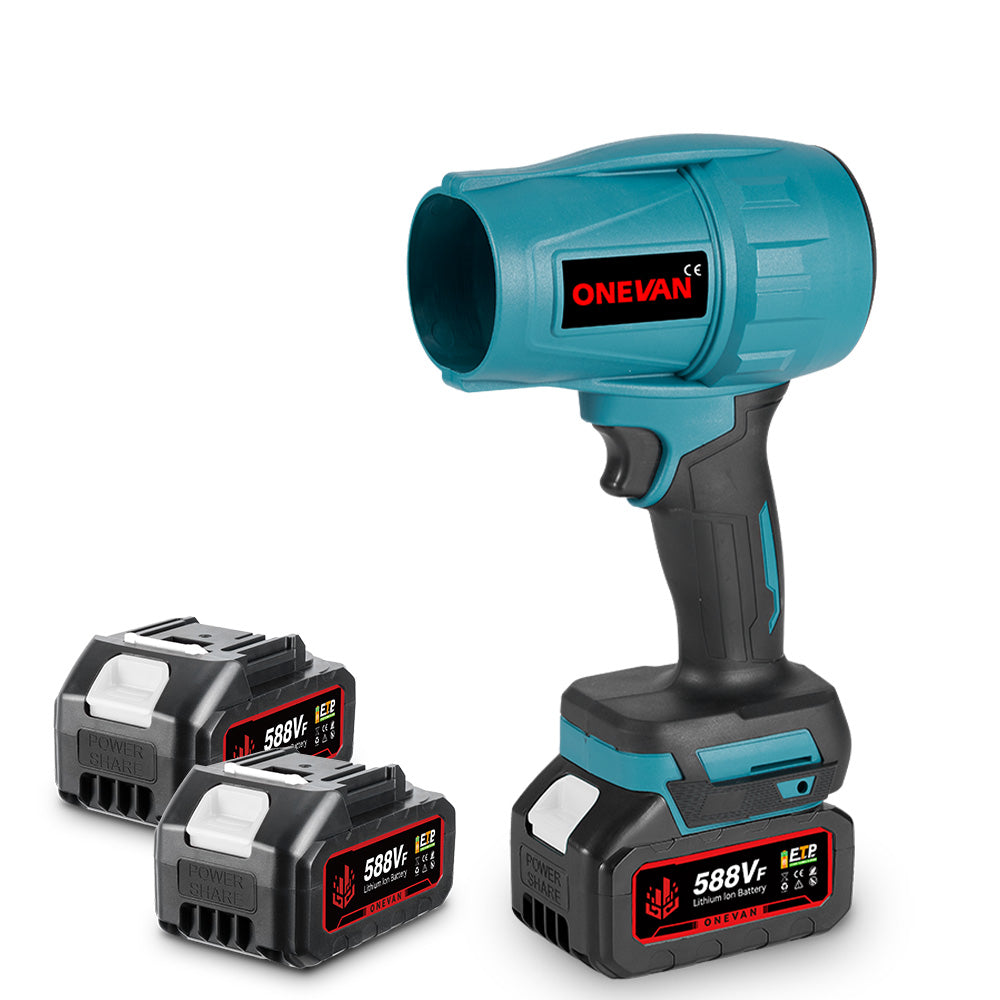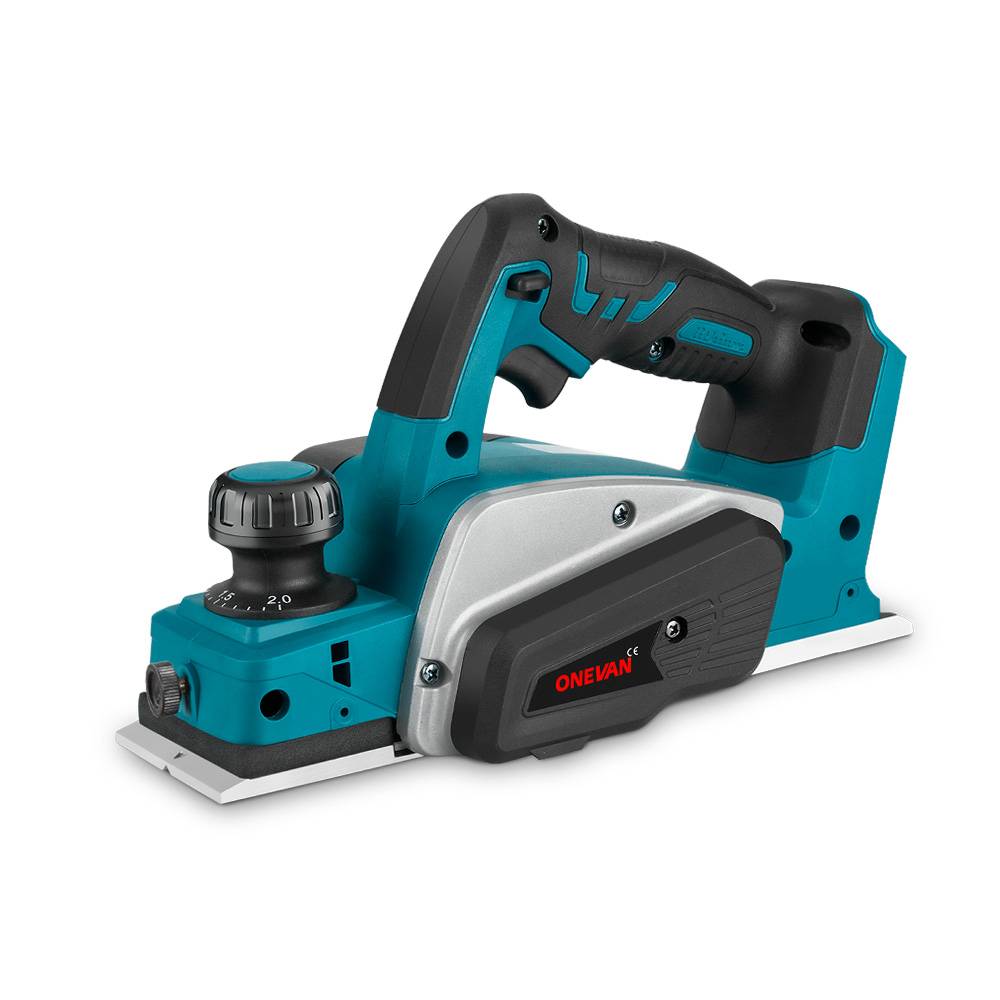Regular cleaning, preferably after each use, is essential for gardening tools such as hedge trimmers. They should be especially well-cleaned before storing them for the end of the growing season after heavy summer use. Clean tools significantly increase gardening efficiency and make working in the garden easier.
Key Takeaways:
- Importance of Cleaning hedge Trimmer
- How to Clean Hedge Trimmer Blades?
- Common Mistakes to Avoid while Cleaning
Hedge trimmer maintenance is crucial for keeping your trimmer in optimum shape and ensuring clean cuts. Hedge trimming strains the blades, and cut branches and twigs' rough, fibrous texture can quickly dull them. Regular post-use maintenance is essential to extend the life of your hedge trimmer.
Plant residue, including resin and wood dust, can accumulate on the blades during operation. Leaving this debris on the blades can lead to premature wear. It's best to clean your hedge trimmer after each use to prevent this and maintain cutting performance.
Which tools exactly need cleaning? The answer is simple: any tool that has nuts, bolts, chains, and/or blades requires regular cleaning. Examples include hedge or branch shears, drum mowers, secateurs, axes and others.
So how do you clean your gardening tools?
1. Why It's Important to Clean Your Hedge Trimmer?
Keeping your hedge trimmer clean can be a trivial task for you, but this can make a significant impact in your gardening. We have explained some major reasons why you should keep your trimmer clean and how it helps you and the hedges:
The Impact of Debris and Sap Buildup on Hedge Trimmer Efficiency
Just imagine you are trying to use scissors smothered in glue and leaves to cut a piece of paper. This is exactly what happens when you employ a hedge trimmer that is dirty. The debris, such as sap, twigs, and leaves, can stick to the blades hence creating numerous problems:
Dull Blades: Clogged blades lose their edge, cutting your hedges raggedly instead of smoothly, cleanly, and neatly. This looks unsightly, damages plants, and makes them more susceptible to disease.
Reduced Performance: A dirty trimmer has to exert itself more to penetrate through the debris, thus overburdening the motor. This may make your work more tiring and may also shorten your trimmer's lifespan.
Jammed Mechanism: In the worst-case scenario, accumulated gumming agents, sticking together the blades can jam up the whole system. This can be a challenging situation since it can lead to repairing the damaged tool.
Tip: Use a damp cloth or brush to clean the blades for a few minutes each time after using them. This simple step will remove any debris that can potentially damage the tool.
The Dangers of Using a Dirty Hedge Trimmer
Using a dirty hedge trimmer can invite numerous risks. We have mentioned some potential risks below:
Control: When debris is in the trimmer, it becomes unbalanced and heavier, making it difficult to control. If you lose control of the tool, you can put yourself in accidents like sliding or cutting yourself.
Dangers: Built-up debris hides the blades, making it hard to know what you are cutting. In this case, the chances of mistakenly cutting yourself or nearby objects increase.
Wear And Tear: A dirty trimmer bears extra pressure. Extra pressure can impact the parts significantly. This can result in expensive repair costs or even you may need to replace your trimmer.
2. What to Do Before Cleaning Your Hedge Trimmer?
Hedge trimmer maintenance relies heavily on proper blade cleaning. Regular cleaning with a specialized hedge trimmer cleaner is essential after use and before use. A good cleaning ensures the complete removal of plant residue, such as resin and debris, which can hinder cutting performance.
Blade inspection is another crucial step. Check the blades for any signs of damage, deformation, or binding issues. For some models, you may need to remove the gearbox lubricant cap and use a multi-function key to check for smooth blade movement.
Safety Measures for Hedge Trimmer Cleaning
Safety should be the paramount concern before cleaning an electric hedge trimmer.
Unplug Your Trimmer: Always unplug the electric trimmer or remove the battery from cordless models whenever you finish your job
Use Eye protection: Use recommended eye protection equipment. It will help you avoid flying debris, which can be extremely dangerous for your naked eyes.
Use hand Gloves: Thick gloves prevent potential cuttings and sharp blades from harming your hands.
Most hedge trimmers can be cleaned without disassembly. But for some models or stubborn grime, taking it apart might be necessary. Here's the general idea (check your user manual for specific steps):
Disassembly Instructions for Hedge Trimmer Cleaning
Find the access points: Look for screws which are possibly holding the front handle or blade guard.
Unscrew carefully: Use the right screwdrivers and take your time to avoid stripping screws.
Remember the order: Take pictures or notes on the proper order of removing parts. This will help you install things back together correctly.
Important Note: Not all trimmers require disassembly for cleaning. Check your user manual to see if yours does. If you're unsure, it's best to avoid taking it apart.
3. Tools and Materials Needed for Cleaning Your Hedge Trimmer
Soft Brush: Grab a regular paintbrush with soft bristles (nylon or boar hair work well). This will be your weapon against debris without scratching your trimmer.
Cleaning Solvent: Sticky sap? No problem. Get a resin solvent specifically made for power tools. A citrus-based one will dissolve the gunk without harming your trimmer. But remember, a little goes a long way - too much solvent leaves a film. When applying the cleaning solvent, work in a well-ventilated area and wear protective gloves to avoid skin irritation.
Cleaning Cloth: Microfiber cloths can be very useful here. They're soft and won't scratch, leaving your trimmer very clean and lint-free.
Light Machine Oil: Light oil for power tools reduce the friction and tools run smoothly. A quick squirt prevents wear and tear, enhancing your trimmer life.
Bonus Tip: Keep these tools in a dedicated pouch for easy access whenever your trimmer needs a cleaning refresh.

4. Step-by-Step Guide to Cleaning Hedge Trimmer Blades
Keeping your hedge trimmer blades clean is important for a smooth and neat tool. Here’s a step-by-step breakdown with clear instructions with actionable insights for beginners:
Required Equipment:Soft-bristled Brush: Get an ordinary paintbrush with soft bristles like nylon hair; it will remove loose material without damaging the blades.
Cleaning Solvent: Find a citrus-based resin solvent specifically for power tools that dissolves sticky sap and grime without spoiling your trimmer. Keep in mind that you will use just a small portion of it from a small bottle.
Microfiber Cloth: Microfiber cloths are gentle and won’t scratch, keeping your trimmer lint-free and shiny clean.
Light Machine Oil: See your user manual – some models suggest applying light machine oil after cleaning to ensure better performance. Go for light oil designed particularly for power tools.
Safety First!
Disconnect your electric trimmer or remove the battery from cordless tools before cleaning them. Use protective eyewear such as safety glasses to prevent debris getting into the eye or splashes of solvents.
In the first step, you will remove any loose leaves, twigs and debris that might be clinging to the blades and its surrounding areas. Here's how:
- Grab your brush: You need to hold the brush and start brushing away any dirt, debris or leaves present on the blade. Do not ignore the spaces between the teeth where debris likes to hide. Generally, people ignore such spaces which can affect the blades performance!
- Compressed Air Option: If you have compressed air, a quick blast can effectively remove stubborn debris stuck between the teeth.
Why it is important to do? Removing loose debris can be beneficial for two reasons.
- It prevents you from accidentally scratching the blades
- It allows the cleaning solvent to perform well on tougher grime.
Sticky saps are proved to be a real pain for your trimmer blades. Applying a cleaning solvent can fix this issue. Here's what to do:
- Choose the right solvent: Bring a citrus-based resin solvent. Remember, a small quantity will work perfectly!
- Target the Sticky areas: Apply a small amount of this solvent onto the blades. You need to focus on areas where there is significant amount of sap is present. We would suggest that don't drench the blades – a few drops are enough. Using too much solvent can leave a permanent film that might impact your next trimming session.
- Let it Work its Magic: As soon as you apply the solvent, give it a few minutes. It will lose the sap and grime. It is recommended to follow the solvent's instructions for the given wait time.
Why We Do This: This cleansing agent dissolves the dirt, enabling you to remove it easily and keep your blades clean.
Step 3: Scrubbing The BladesSince the solvent has already started loosening tough areas, it is about time to consider giving those blades a good scrub. Always be gentle because the blades are sharp!
Brush It Off: Gently rub the teeth toward your soft-bristled brush on the blades. This will dislodge traces of solvents that may remain behind after cleaning. Never do this with too much force since you can easily hurt yourself on sharp edges.
Use a Microfiber Cloth: For stubborn dirt that your brush cannot remove, use a microfiber cloth. If you are using a water-based cleaner, dampen it with clean water. For an oil-based cleaner, just add a little bit of fresh solvent and then wipe down all surfaces to free them from dirt, sap, and solvent residues.
This step depends on your specific trimmer model. Some manufacturers recommend against rinsing the blades with water to prevent rust. Here's how to do this:
- Water Check: Before rinsing, check your user manual. It will tell you if rinsing with water is okay for your battery-powered hedge trimmers.
- Rinsing: If your manual says its okay, use clean water to rinse the blades. Make sure to dry them thoroughly.
- Drying is Crucial: Regardless of whether you rinsed or not, use a clean, dry microfiber cloth to meticulously dry the blades. Leaving any moisture behind can lead to rust.
A smooth cut is hampered by friction. In order to ensure flawless movement and improved performance for your blades, the final step involves applying a little depending on your electric hedge trimmer.
Light Oil: Check user manual once again. Some brands may not require lubrication after cleaning. However, if recommended in your guide, use light machine oil that is made specifically for power tools.
Focal Points: Put a small amount of oil on moving parts of blades like blade connectors. Coating them lightly is enough because it won’t invite dirt and other debris.
Why We Do This: A thin coat of oil reduces friction between moving parts thus enabling smooth blade motion and reducing wear and tear. It significantly improves hedge trimmer performance and life.
5. Post-Cleaning Maintenance Your Hedge Trimmer
Till now, everything is going smooth. We have just read how to clean a hedge trimmer. Now, what is the next step? It is about post-cleaning maintenance of your cordless hedge trimmer.
Quick Swab after Each Use (1 minute): It may not look like much, but a quick rub down with a wet cloth can extend the time between deep cleans. This will remove any excess sap or debris that might have accumulated when cutting them off and prevent them from drying up and becoming difficult to get rid of.
Check the Dull Blade: With the passage of the time, even the cleanest razors will lose their sharpness. Look out for these issues timely:
Rough Cuts: Sharp blades make smooth cuts. Dull edges on your cut pieces are a sign of dullness.
Sharp your tool: A sharp blade moves through hedges without a problem. Proper sharpening is recommended to get the best results from it.
Unusual Vibration: Damp trains create more resistance, resulting in increased vibration levels, which can cause discomfort and possible motor damage.
Methods of Sharpening:
Hedge trimmer blade maintenance inevitably involves sharpening. The blades naturally wear down over time due to cutting stress from thick branches, hard wood, and accumulated resin residue, which can all contribute to blade dulling.
Signs of dull hedge trimmer blades:- Uneven cutting surfaces: Previously smooth cuts become jagged and torn, indicating a loss of sharpness.
- Increased cutting effort: Significantly more force is required to trim the hedge due to the dull blades.
- Blade binding: Cut branches get stuck within the blades because they can't be cleanly sheared through.
Hedge trimmer blade sharpening tools deliver proven results for both manual and electric hedge trimmers. Abrasive tools are must for the cutting surfaces and blades made of steel, you'll need appropriate abrasive tools to shape and smooth the hard surface.
Common sharpening tools:- Flat file: This is a user-friendly option for light sharpening of hedge trimmer blades.
- Sharpening stone: These stones are made of very hard minerals that can effectively sharpen steel surfaces. Remember to moisten the stone before use to prevent dust buildup in the pores.
Additional items:
- Soft fabric
- Solvent for removing resin and dirt (e.g., citrus cleaner)
- Work gloves
- Safety glasses or face shield
Sharpening hedge trimmers at home is achievable, but having the right equipment and following proper technique is crucial.
6. Common Mistakes to Avoid While Cleaning Your Hedge Trimmer
When making a good cut and increasing the life of your battery powered hedge trimmer, maintaining sharp, clean blades is very important. Incorrect cleaning techniques can damage the blades and impact their performance. Here are a few tips to avoid common mistakes during blade cleaning of hedge trimmer:
Instead of harsh chemicals, opt for mild, manufacturer-recommended cleaning solutions or a simple mixture of dish soap and water to avoid damaging the blade coating.
Don’t let debris stay on the blades! Resin and sap left on the blades can reduce their sharpness and cutting efficiency. Clear away all debris using appropriate solvents as well as brushes.
Drying out is important! Moisture content that remains on the blades may lead to rusting. Dry off the water or any wet area properly after washing them down and also apply a thin layer of lubrication oil.
Ignoring safety: Always use gloves and goggles when handling sharp objects such as knives plus solvents that could damage your eyes.
7. The Difference Between Storing Gas, Corded And Cordless Hedge Trimmers
General Features
- Stroke Rate: Varies by model, typically found in user manuals or manufacturer websites.
- Body Materials: Varies by model, typically ABS plastic or aluminum (details in user manuals or manufacturer websites).
Noise and Vibration
- Sound Power Level (dB):
- Gas: Generally louder
- Corded Electric: Lower noise level than gas trimmers
- Cordless Electric: Quietest option, but noise level can vary depending on model
- Vibration Level (m/s²):
- Gas: May have higher vibration due to the engine
- Corded Electric: Lower vibration than gas trimmers
- Cordless Electric: May have lower vibration than gas, but some models might have noticeable vibration
Usability and Maintenance
- Storage Requirements:
- Gas: Requires ventilated storage away from heat sources. Fuel must be drained or stabilized for long-term storage (consult user manual).
- Corded Electric: Store in a dry location. Can be wrapped in a cord protector to prevent tangles.
- Cordless Electric: Dry location is recommended. Battery should be partially charged and removed for long-term storage (consult user manual).
- Maintenance:
- Gas: Requires regular engine maintenance.
- Corded Electric: Involve minimal maintenance.
- Cordless Electric: Involve battery maintenance and monitoring.
- Safety Considerations:
- Gas: Store gas safely, ensure proper ventilation during storage.
- Corded Electric: No fuel safety concerns, avoid electrical hazards or nearby water.
- Cordless Electric: Offers greater freedom of movement without the need for fuel or power cords, though usage is limited by battery capacity."
- Portability:
- Gas: Due to gas can and engine weight, it is very hard to approach tight spaces with this tool.
- Corded Electric: Your movement is bound to a cable connected with a wired hedge trimmer.
- Cordless Electric: Most portable due to the lack of a cord and gas can.
- Starting:
- Gas: Requires manual pull start or electric start (depending on model).
- Corded Electric: Starts instantly with a button press.
- Cordless Electric: Requires a charged battery to start.
8. Conclusion
You have learned how to clean a hedge trimmer. This guide covers every point for beginners to make an impact in using a cordless hedge trimmer. It has ultimately given you ideas on how to maintain your trimmer in proper working condition, making sure that it cuts well, runs easily, and lasts long.
9. FAQ
1. What is the best cleaner for hedge trimmer blades?
The best cleaner generally depends on the type of debris you're trying to remove.
- For general cleaning: Use a manufacturer-recommended cleaning solution or a mild dish soap (phosphate-free is ideal) diluted with warm water.
- For removing resin: Apply a citrus-based solvent directly to the debris. Later, let it work before gently agitating with a soft-bristled brush.
2. Can I use WD-40 on hedge trimmer blades?
WD-40 can remove some debris. However, it's not ideal for cleaning hedge trimmer blades. It can invite more dirt and grime with the passage of the time. It will not effectively remove sticky substances such as resin or sap. It's recommended to use a dedicated cleaner for such tasks. However, WD-40 is effective as a light lubricant.
3. How to remove resin from a hedge trimmer?<
You can easily remove resin by applying a citrus-based solvent to the resin. Let it work for a few minutes. Use a brush to gently remove the grip of the resin on the blade. Later, wipe away the loosened debris with a clean cloth. You can repeat if necessary.
4. How to clean sap off hedge trimmer blades?
You can easily remove any large clumps of sap with a plastic putty knife (avoid metal tools). Then, follow the same steps as for resin removal using a citrus solvent and a brush.
5. Does Dawn remove sap?
Yes, Dawn dish soap (or any mild dish soap) diluted with a little warm water can help remove some light sap residue. However, citrus-based solvents are generally more effective for stubborn sap.
6. Does white vinegar remove sap?
White vinegar can be useful in loosen some light sap, but it's not as strong as a citrus solvent. So it won’t be a good choice. Although white vinegar is slightly acidic, when used carefully, it is unlikely to drastically dull the blades but should be used sparingly to avoid potential long-term effects. It's best to stick with safer options.
7. Does WD-40 remove sap?
No, WD-40 is not effective for removing sap. Using WD-40 on sap may actually make the sap stickier over time.
8. What will dissolve pine sap?
Citrus-based solvents are very useful at dissolving pine sap.
9. What household product removes tree sap?
You can try using:
- rubbing alcohol
- mineral oil
- Mayonnaise to remove light sap residue.
However, citrus-based solvents are generally the safest and most effective option to clean a cordless hedge trimmer.
10. Does Windex remove sap?
No, Windex is not recommended for removing sap. Generally, it contains ammonia, which can damage the blade coating and also causes rusting.

